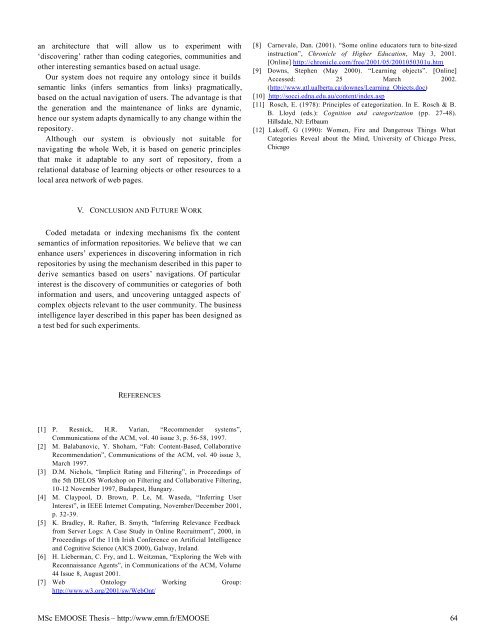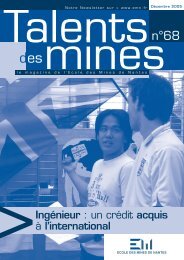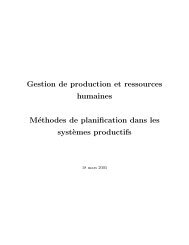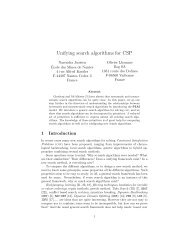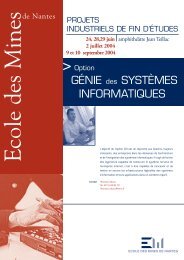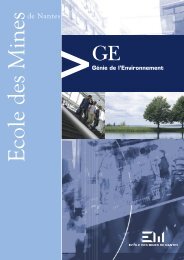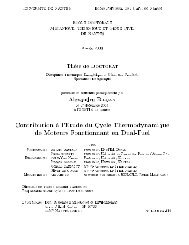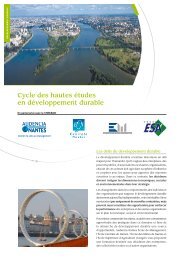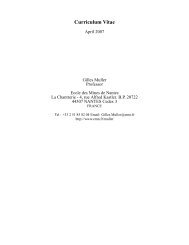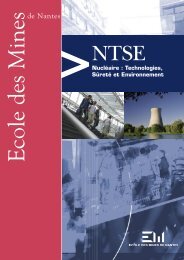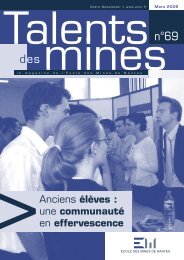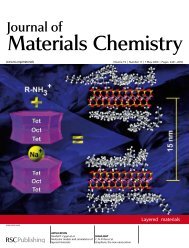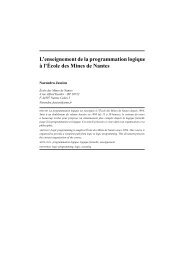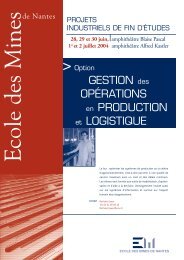pdf - 395 K - Ecole des mines de Nantes
pdf - 395 K - Ecole des mines de Nantes
pdf - 395 K - Ecole des mines de Nantes
Create successful ePaper yourself
Turn your PDF publications into a flip-book with our unique Google optimized e-Paper software.
an architecture that will allow us to experiment with‘discovering’ rather than coding categories, communities andother interesting semantics based on actual usage.Our system does not require any ontology since it buildssemantic links (infers semantics from links) pragmatically,based on the actual navigation of users. The advantage is thatthe generation and the maintenance of links are dynamic,hence our system adapts dynamically to any change within therepository.Although our system is obviously not suitable fornavigating the whole Web, it is based on generic principlesthat make it adaptable to any sort of repository, from arelational database of learning objects or other resources to alocal area network of web pages.[8] Carnevale, Dan. (2001). “Some online educators turn to bite-sizedinstruction”, Chronicle of Higher Education, May 3, 2001.[Online] http://chronicle.com/free/2001/05/2001050301u.htm[9] Downs, Stephen (May 2000). “Learning objects”. [Online]Accessed: 25 March 2002.(http://www.atl.ualberta.ca/downes/Learning_Objects.doc)[10] http://socci.edna.edu.au/content/in<strong>de</strong>x.asp[11] Rosch, E. (1978): Principles of categorization. In E. Rosch & B.B. Lloyd (eds.): Cognition and categorization (pp. 27-48).Hillsdale, NJ: Erlbaum[12] Lakoff, G (1990): Women, Fire and Dangerous Things WhatCategories Reveal about the Mind, University of Chicago Press,ChicagoV. CONCLUSION AND FUTURE WORKCo<strong>de</strong>d metadata or in<strong>de</strong>xing mechanisms fix the contentsemantics of information repositories. We believe that we canenhance users’ experiences in discovering information in richrepositories by using the mechanism <strong><strong>de</strong>s</strong>cribed in this paper to<strong>de</strong>rive semantics based on users’ navigations. Of particularinterest is the discovery of communities or categories of bothinformation and users, and uncovering untagged aspects ofcomplex objects relevant to the user community. The businessintelligence layer <strong><strong>de</strong>s</strong>cribed in this paper has been <strong><strong>de</strong>s</strong>igned asa test bed for such experiments.REFERENCES[1] P. Resnick, H.R. Varian, “Recommen<strong>de</strong>r systems”,Communications of the ACM, vol. 40 issue 3, p. 56-58, 1997.[2] M. Balabanovic, Y. Shoham, “Fab: Content-Based, CollaborativeRecommendation”, Communications of the ACM, vol. 40 issue 3,March 1997.[3] D.M. Nichols, “Implicit Rating and Filtering”, in Proceedings ofthe 5th DELOS Workshop on Filtering and Collaborative Filtering,10-12 November 1997, Budapest, Hungary.[4] M. Claypool, D. Brown, P. Le, M. Waseda, “Inferring UserInterest”, in IEEE Internet Computing, November/December 2001,p. 32-39.[5] K. Bradley, R. Rafter, B. Smyth, “Inferring Relevance Feedbackfrom Server Logs: A Case Study in Online Recruitment”, 2000, inProceedings of the 11th Irish Conference on Artificial Intelligenceand Cognitive Science (AICS 2000), Galway, Ireland.[6] H. Lieberman, C. Fry, and L. Weitzman, “Exploring the Web withReconnaissance Agents”, in Communications of the ACM, Volume44 Issue 8, August 2001.[7] Web Ontology Working Group:http://www.w3.org/2001/sw/WebOnt/MSc EMOOSE Thesis – http://www.emn.fr/EMOOSE 64


